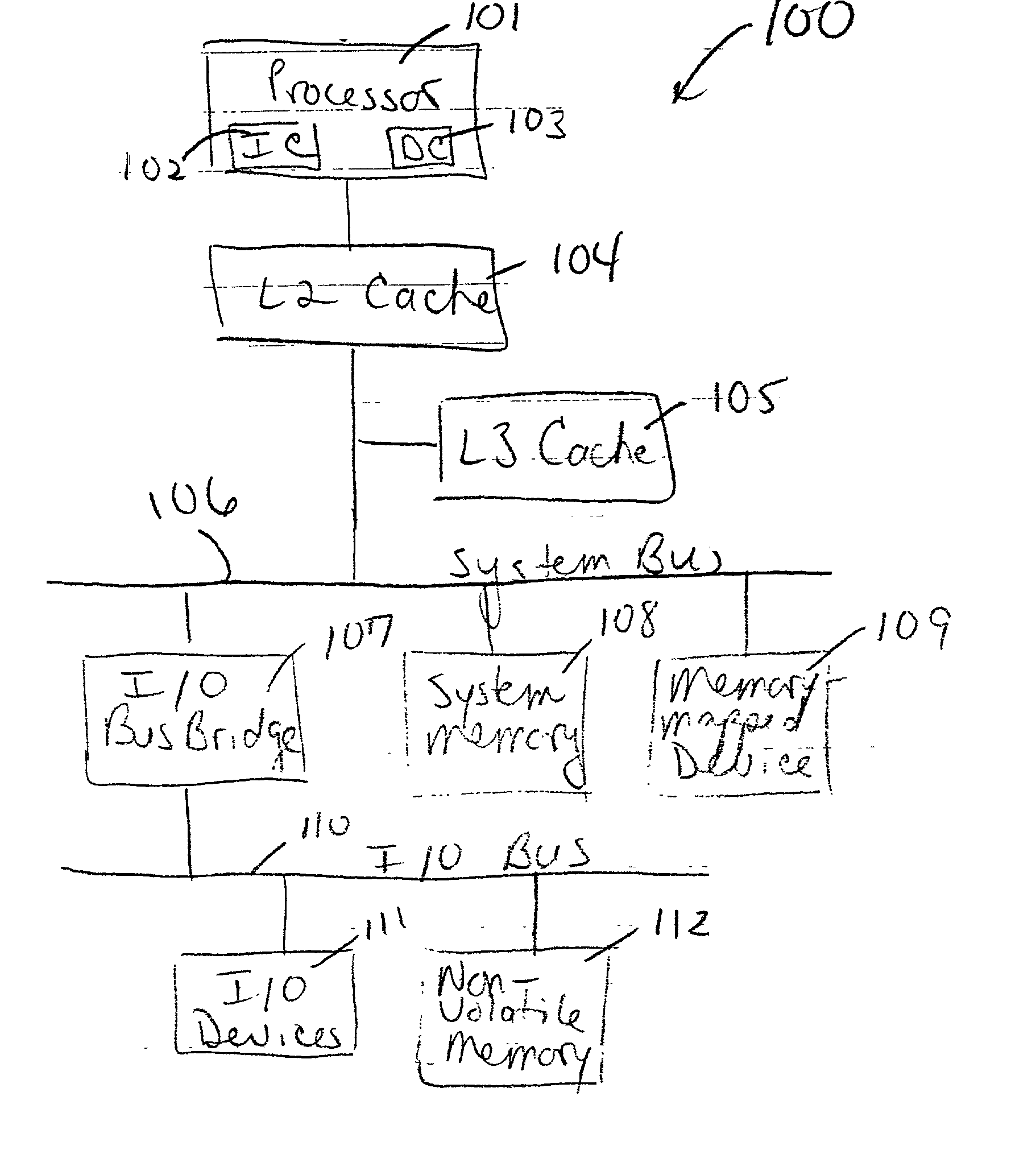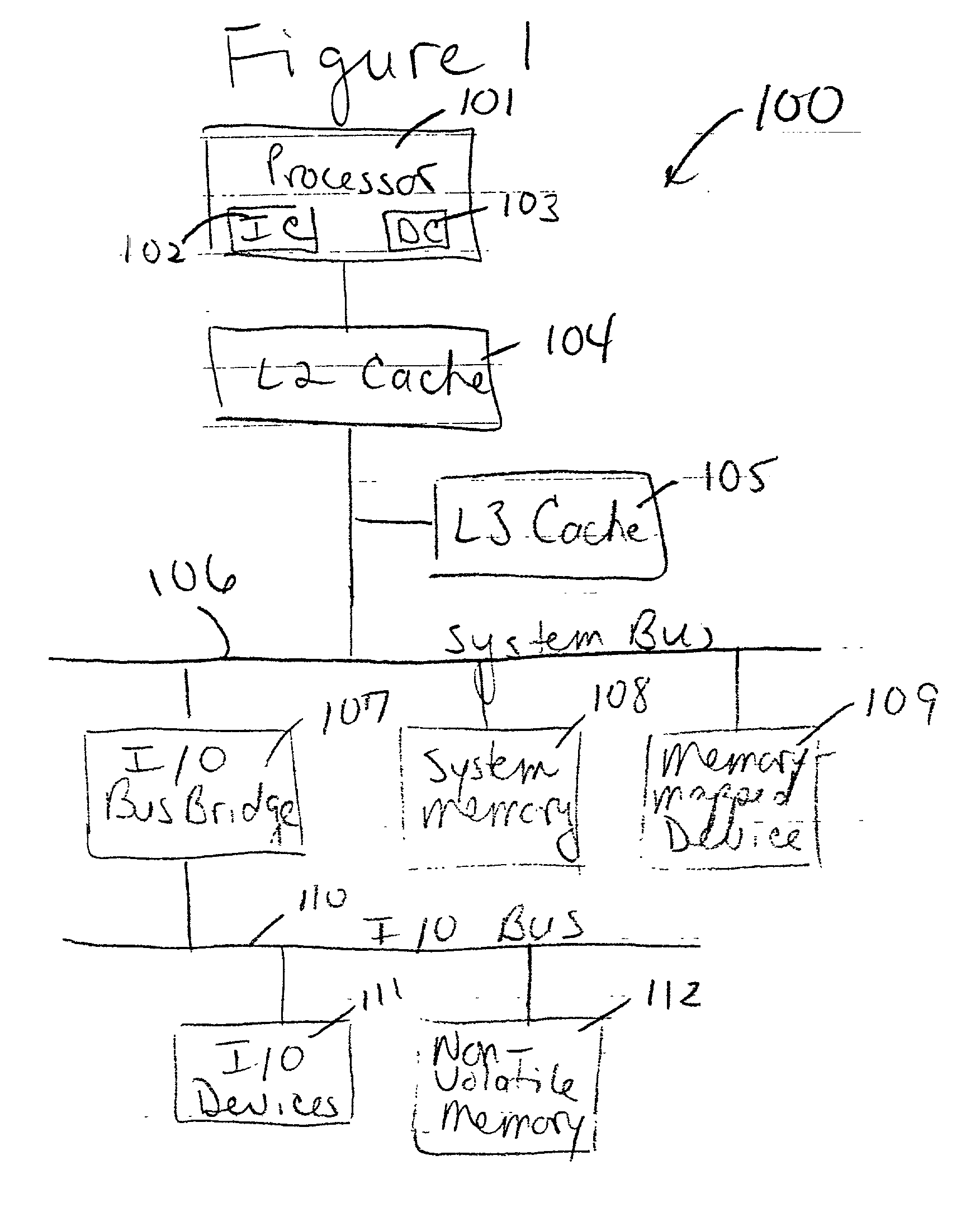Reducing resource collisions associated with memory units in a multi-level hierarchy memory system
a memory system and multi-level hierarchy technology, applied in memory adressing/allocation/relocation, instruments, computing, etc., can solve problems such as resource collisions, resource collisions in hierarchial memory, cache misses, etc., and achieve the effect of reducing resource collisions
- Summary
- Abstract
- Description
- Claims
- Application Information
AI Technical Summary
Benefits of technology
Problems solved by technology
Method used
Image
Examples
Embodiment Construction
[0024] FIG. 1--Computer System
[0025] FIG. 1 illustrates an embodiment of the present invention of a data processing system 100. Data processing system 100 comprises a processing unit 101, such as a conventional microprocessor. Processor 101 may comprise a level one (L1) instruction cache 102 and a level one (L1) data cache 103. It is noted that those skilled in the art will recognize that a single, unified L1 cache may be implemented. L1 instruction cache 102 and L1 data cache 103 may be configured to temporarily store instruction and data values, respectively, that may be repeatedly accessed by processor 101. By storing instruction and data values that are repeatedly accessed, processing speed may be improved by avoiding the step of loading the values from a system memory 108, e.g., Random Access Memory (RAM). In order to minimize data access latency, one or more additional levels of cache memory may be implemented within data processing system 100, such as a level two (L2) cache 1...
PUM
 Login to View More
Login to View More Abstract
Description
Claims
Application Information
 Login to View More
Login to View More - R&D
- Intellectual Property
- Life Sciences
- Materials
- Tech Scout
- Unparalleled Data Quality
- Higher Quality Content
- 60% Fewer Hallucinations
Browse by: Latest US Patents, China's latest patents, Technical Efficacy Thesaurus, Application Domain, Technology Topic, Popular Technical Reports.
© 2025 PatSnap. All rights reserved.Legal|Privacy policy|Modern Slavery Act Transparency Statement|Sitemap|About US| Contact US: help@patsnap.com



